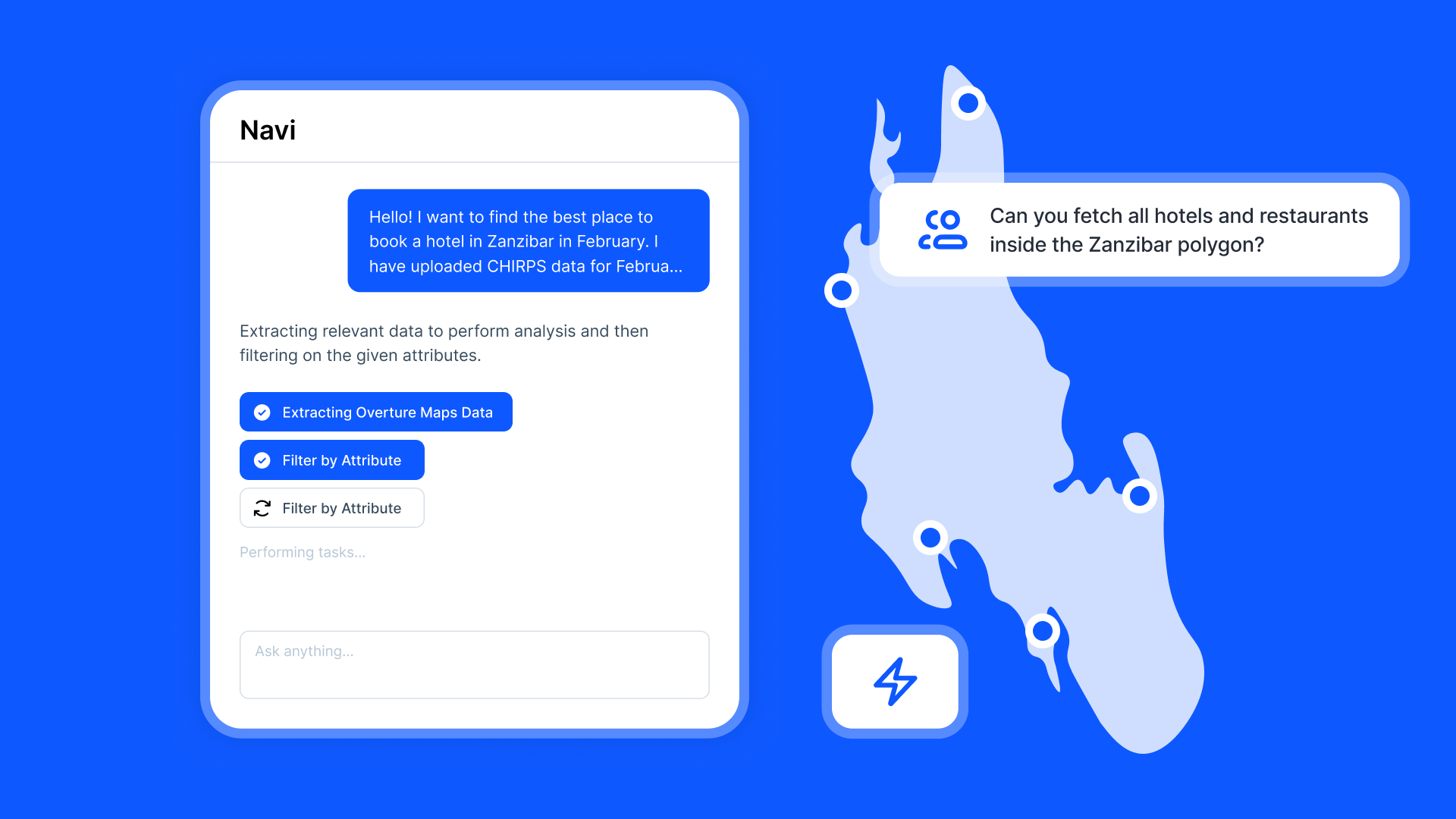The most effective solar site selection combines comprehensive terrain analysis with solar exposure data to reveal exactly which land parcels offer the best conditions for solar development, where topographic features optimize energy generation, and how geographic factors affect project feasibility and performance.
If your solar site analysis relies only on basic property searches, general location assessments, or land data that lacks detailed topographic and solar exposure analysis, you're missing the terrain intelligence that reveals optimal solar sites, development challenges, and energy generation potential. That's why experienced renewable energy developers ask: can we find solar-friendly land using slope and sun exposure maps to identify optimal terrain conditions, evaluate solar potential, and select the best sites for renewable energy projects based on comprehensive geographic analysis?
With Atlas, you can create comprehensive solar site analysis that combines topographic mapping with solar exposure evaluation and renewable energy intelligence for actionable site selection decisions. No complex terrain analysis software, no uncertainty about solar potential, no barriers to understanding land suitability. Everything starts with clear geographic visualization and meaningful solar site evaluation.
Here's how to set it up step by step.
Why Solar-Friendly Land Analysis with Slope and Sun Exposure Maps Matters for Renewable Energy Development
Creating comprehensive terrain and solar analysis enables better site selection and more effective renewable energy project development across potential solar locations.
So solar-friendly land analysis with slope and sun exposure maps isn't just convenient site visualization—it's essential renewable energy intelligence that transforms terrain data into strategic site selection insights for successful solar development.
Step 1: Set Up Comprehensive Terrain and Solar Data Integration
Atlas makes it easy to create detailed solar site analysis with comprehensive terrain and solar exposure evaluation:
- Upload topographic and elevation data including digital elevation models, slope calculations, and terrain characteristics that affect solar panel placement and energy generation efficiency
- Add solar exposure information showing sun angles, seasonal variations, shadow patterns, and solar irradiance data organized by location and time period for comprehensive solar potential assessment
- Import land parcel and ownership data connecting property boundaries, ownership information, and land use restrictions to terrain analysis for comprehensive site evaluation
- Include infrastructure and access context showing road networks, utility connections, transmission lines, and development infrastructure that affect project feasibility and costs
Once configured, your solar site analysis provides the geographic foundation for comprehensive renewable energy site selection and development planning.
Step 2: Create Solar Site Visualization and Terrain Suitability Analysis
Next, build solar site visualization that reveals terrain conditions and solar potential across different land areas:
You can display different solar site analysis approaches:
- Slope suitability mapping showing areas with optimal slope angles (typically 0-15% for solar installations) with color-coded indicators that make suitable terrain immediately clear
- Solar exposure analysis displaying sun exposure patterns, seasonal variations, and daily solar irradiance levels that reveal energy generation potential across different locations
- Terrain challenge identification revealing steep slopes, irregular terrain, and topographic features that increase development costs or reduce solar efficiency
- Shadow and obstruction analysis mapping how terrain features, vegetation, and existing structures create shadows that affect solar panel performance and site suitability
- Accessibility and development showing how terrain conditions affect construction access, equipment placement, and project development costs and complexity
- Combined suitability scoring integrating slope, solar exposure, and development factors to identify the most promising solar development sites
Each visualization approach reveals site characteristics that inform solar development decisions, cost estimation, and project planning strategies.
Step 3: Analyze Solar Site Patterns and Development Opportunities
To extract renewable energy insights from solar site analysis:
- Identify optimal solar sites discovering land parcels with ideal slope conditions, maximum sun exposure, and terrain characteristics that support efficient solar development
- Evaluate development challenges understanding how terrain conditions affect construction costs, access requirements, and technical complexity for different potential sites
- Assess solar generation potential analyzing how slope, orientation, and solar exposure translate to energy generation capacity and project financial performance
- Compare site economics evaluating development costs, generation potential, and financial returns across different terrain conditions and solar exposure levels
- Discover expansion opportunities using terrain and solar analysis to identify additional suitable sites and plan solar portfolio development
Solar site analysis reveals development opportunities and site optimization strategies that maximize renewable energy project success.
Step 4. Enable Solar Development Team Coordination and Site Evaluation
To support renewable energy development and project planning:
- Create solar site assessment dashboards providing development teams with comprehensive terrain analysis, solar potential evaluation, and site suitability intelligence
- Set up project coordination tools helping engineering teams understand site conditions, plan development approaches, and coordinate project execution based on terrain analysis
- Add stakeholder communication enabling clear presentation of site analysis, development potential, and project feasibility to investors and regulatory agencies
- Include permitting support providing terrain and solar analysis for environmental assessments, land use applications, and regulatory approval processes
- Configure financial modeling using site analysis data to support project financing, cost estimation, and investment decision-making processes
Solar site intelligence becomes actionable across renewable energy development teams, enabling coordinated project planning and informed site selection decisions.
Step 5: Optimize Solar Development Strategy and Project Planning
To use solar site analysis for strategic renewable energy development:
- Plan solar project portfolios using terrain and solar analysis to identify multiple suitable sites and coordinate regional renewable energy development strategies
- Optimize site preparation understanding terrain conditions to plan grading, access roads, and site preparation activities that minimize costs and environmental impact
- Coordinate infrastructure development using site analysis to plan electrical connections, transmission access, and utility integration based on terrain and location factors
- Design construction strategies analyzing terrain conditions to optimize equipment placement, construction sequencing, and project execution approaches
- Plan maintenance and operations understanding site conditions to design access strategies, maintenance approaches, and long-term operational planning
Also read: Track Equipment and Assets by Location
Step 6: Integrate Solar Site Analysis with Renewable Energy Development Systems
Now that comprehensive solar site analysis and terrain evaluation are complete:
- Export site intelligence for integration with renewable energy development platforms, project management systems, and financial modeling tools
- Create engineering support using terrain analysis to inform detailed site design, equipment specification, and construction planning for solar projects
- Set up regulatory coordination providing site analysis for environmental impact assessments, permitting applications, and regulatory compliance processes
- Design portfolio management using site analysis to support renewable energy portfolio development, investment planning, and strategic site selection
- Generate development intelligence supporting renewable energy consulting, project development, and investment analysis with comprehensive solar site evaluation
Your solar site analysis becomes part of comprehensive renewable energy development that creates better project outcomes through terrain intelligence and strategic site selection.
Use Cases
Finding solar-friendly land using slope and sun exposure maps is useful for:
- Solar developers identifying optimal sites for renewable energy projects and evaluating development potential based on comprehensive terrain and solar analysis
- Renewable energy consultants supporting clients with site selection and feasibility analysis based on slope conditions, solar exposure, and development requirements
- Land acquisition specialists evaluating property potential for solar development and making investment decisions based on terrain suitability and energy generation capacity
- Engineering firms analyzing site conditions and planning solar installations based on comprehensive topographic and solar exposure intelligence
- Investment analysts assessing renewable energy project potential and making financing decisions based on site analysis and energy generation projections
It's essential for any solar development where site success depends on understanding terrain conditions and making data-driven decisions about land suitability and renewable energy potential.
Tips
- Consider seasonal variations analyzing how solar exposure changes throughout the year and understanding seasonal energy generation patterns for financial modeling
- Include micro-climate factors understanding how local terrain features affect wind patterns, temperature, and other factors that influence solar panel efficiency
- Evaluate grid connection access analyzing proximity to transmission infrastructure and utility connections when assessing overall site suitability
- Plan for site preparation understanding terrain modification requirements and costs when evaluating development feasibility and project economics
- Combine with environmental factors analyzing how terrain conditions relate to environmental constraints, permitting requirements, and regulatory considerations
Finding solar-friendly land using slope and sun exposure maps in Atlas enables comprehensive site evaluation and evidence-based renewable energy development decisions.
No separate terrain analysis software needed. Just analyze slope and solar conditions geographically, evaluate site suitability, and discover the renewable energy intelligence that optimizes solar development and project success.
Site Search and Evaluation with Atlas
Finding the right location isn't just about availability—it's about discovering sites that meet your specific requirements and offer the best potential for project success.
Atlas helps you turn location criteria into actionable site intelligence: one platform for site analysis, evaluation, and strategic selection.
Transform Location Requirements into Site Intelligence
You can:
- Analyze terrain conditions, environmental factors, and infrastructure access that affect site suitability
- Evaluate multiple sites simultaneously and compare them based on your specific project requirements
- Identify optimal locations by combining geographic analysis with project-specific criteria and constraints
Also read: Track Equipment and Assets by Location
Build Site Selection That Drives Project Success
Atlas lets you:
- Score and rank potential sites based on multiple criteria and project requirements
- Generate comprehensive site reports that support decision-making and stakeholder communication
- Export site intelligence for integration with project development and investment analysis systems
That means no more guessing about site suitability, and no more uncertainty about which locations offer the best potential for your projects.
Discover Better Sites Through Geographic Intelligence
Whether you're developing renewable energy projects, planning infrastructure, or selecting commercial locations, Atlas helps you turn site requirements into competitive advantage.
It's site evaluation—designed for geographic precision and project success.
Find Your Ideal Location with the Right Tools
Site selection is complex, but location intelligence can be simple. Whether you're evaluating terrain conditions, analyzing infrastructure access, assessing environmental factors, or planning development—location matters.
Atlas gives you both precision and insight.
In this article, we covered how to find solar-friendly land using slope and sun exposure maps, but that's just one of many ways Atlas helps you evaluate sites.
From terrain analysis to infrastructure assessment, environmental evaluation, and development planning, Atlas makes site search and evaluation accessible and actionable. All from your browser. No geographic expertise needed.
So whether you're developing renewable energy projects or selecting any type of location-dependent project, Atlas helps you move from "searching for sites" to "selecting optimal locations" faster.
Sign up for free or book a walkthrough today.





